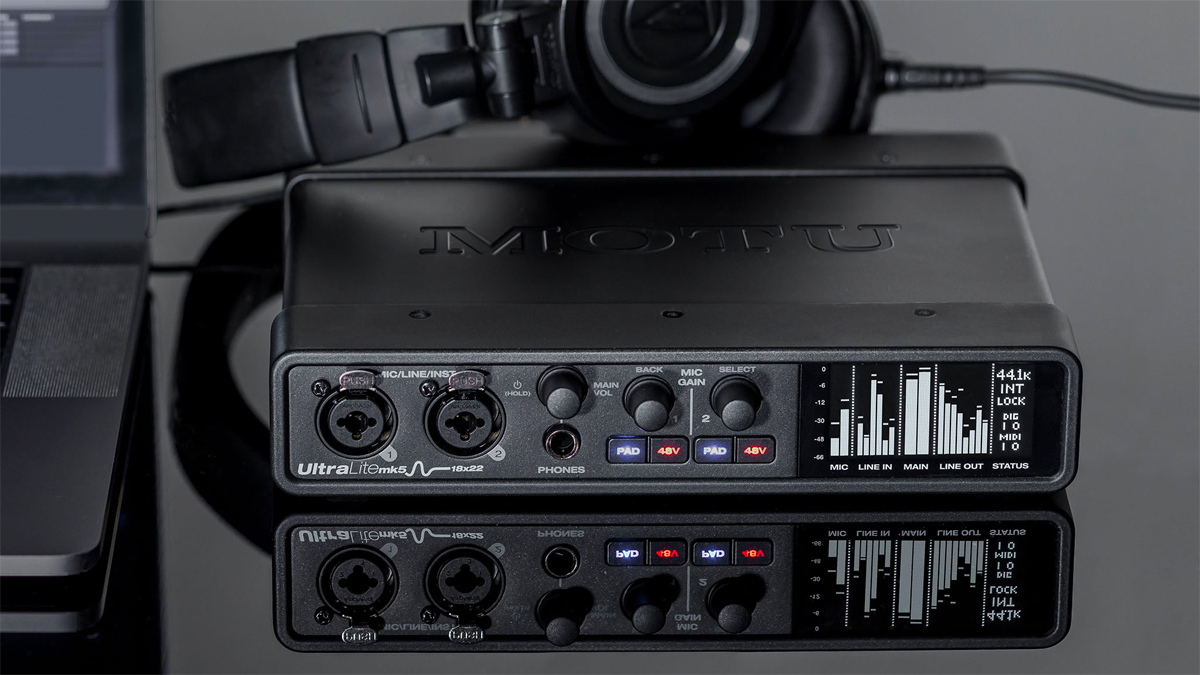MOTU’s re-engineered UltraLite-mk5 audio interface promises sharper looks and better sound
Popular ‘face gets a lift

These days, it’s not enough for an audio interface to sound great - it has to look the part, too. With its redesigned steel enclosure and molded aluminium end caps, MOTU’s new UltraLite-mk5 certainly catches the eye, with its high-contrast white OLED display adding to the air of industrial sophistication.
The UltraLite-mk5 is the latest iteration of MOTU’s popular 18 x 22 half-rack USB audio interface. Connectivity is the same as its predecessors, so you get 40 simultaneous I/O channels, made up of two front-panel XLR/TRS combo-style mic/line/hi-Z guitar
inputs with preamps (+74 dB of gain), 6 x 10 balanced quarter-inch analogue I/O, 8-channel ADAT optical (switchable to stereo TOSLink), stereo RCA S/PDIF I/O and MIDI In/Out jacks.
Metering for all those analogue inputs and outputs comes via that OLED display, which also indicates digital I/O activity and other status info.
Under the hood, updated ESS DAC Technology powers the analogue outputs - including headphones - while the ES9026PRO DAC gives you 125 dB dynamic range on the line outputs. Performance of the analogue inputs, meanwhile, is said to be vastly improved in comparison to previous UltraLite models, with quoted specs of 120 dB dynamic range and -114 dB THD+N (0.0002%).
Software control comes via the re-engineered CueMix 5 app, which runs on macOS, Windows 10 and iOS. You can now engage direct monitoring for each input with a single click on the home screen, while separate mix tabs enable you to create independent monitor mixes for each analogue output pair, complete with 4-band parametric EQ, gating, compression and reverb.
Connection to your Mac, PC or iOS device is via high-speed USB-C and sample rates of up to 192kHz are supported.
Want all the hottest music and gear news, reviews, deals, features and more, direct to your inbox? Sign up here.
The UltraLite-mk5 is available now priced at $595. Find out more on the MOTU website.



I’m the Deputy Editor of MusicRadar, having worked on the site since its launch in 2007. I previously spent eight years working on our sister magazine, Computer Music. I’ve been playing the piano, gigging in bands and failing to finish tracks at home for more than 30 years, 24 of which I’ve also spent writing about music and the ever-changing technology used to make it.